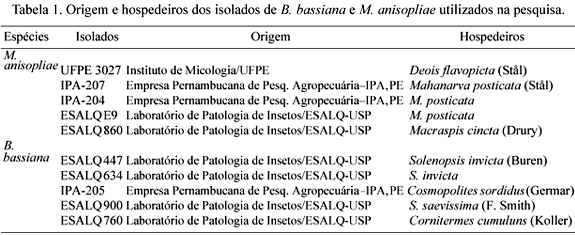An initial screening was undertaken using the isolates ESALQ 447, ESALQ 760, ESALQ 900, ESALQ 634, IPA-205 and ESALQ 760 of B. bassiana, and ESALQ E9, IPA-207, ESALQ 860, IPA-204 and UFPE 3027 of M. anisopliae at the concentration of 10(8) conidia/ml for the diamondback moth (DBM) second instar. All isolates tested caused DBM larval mortality ranging from 70% to 96%, except the M. anisopliae isolate UFPE 3027, which resulted in a mortality of 26%. Based on this survey the isolates ESALQ 634 and ESALQ 447 of B. bassiana and IPA-207 and ESALQ E9 of M. anisopliae were chosen and assessed at the concentrations 10(5), 10(6), 10(7) and 10(8) conidia/ml for DBM second instar. These selected isolates at concentrations higher than 10(6) conidia/ml caused DBM larval mortality ranging from 58% to 96%. The mean lethal time (LT50) for DBM second instar were 1.1 and 4.3 days, and 0.7 and 5.8 days for B. bassiana isolates ESALQ 634 and ESALQ 447 and M. anisopliae isolates IPA-207 and ESALQ E9, respectively. Based on the lethal concentrations (LC50) the isolates IPA-207 and ESALQ E9 were seven times more virulent to DBM second instar than B. bassiana isolates ESALQ 634 and ESALQ 447. These results showed that DBM larvae were more susceptible to M. anisopliae than to B. bassiana and that M. anisopliae isolates IPA-207 and ESALQ E9 may be a valuable component for the integrated management of DBM larvae.
Biological control; cabbage; Brassica oleracea; diamondback moth; entomopathogenic fungus



